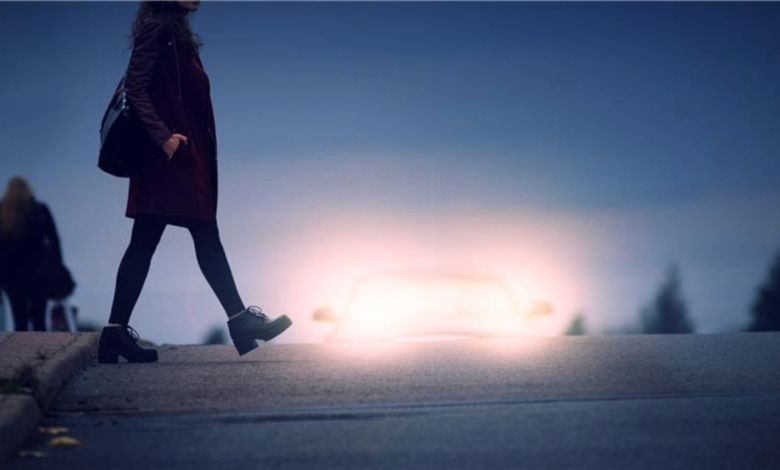
AAA: Dark city roads deadliest for pedestrians at night
New research finds fatalities occur disproportionately in socially and economically disadvantaged neighborhoods.
New research from the AAA Foundation for Traffic Safety reveals concerning trends in pedestrian fatalities in the U.S., which have risen by over 80% in the past 15 years after reaching a historic low in 2009. Interestingly, almost the entire increase in pedestrian deaths has occurred on urban arterial roads and after dark.
These busy city roads are typically built to quickly move a lot of traffic between metropolitan areas while still allowing access to local streets. This means pedestrians and vehicles often share congested roads that are not always well-lit or have appropriate sidewalks, crosswalks, or traffic signals.
“The continued rise in pedestrian fatalities in the U.S. since 2010 is a traffic safety challenge we need to address,” said Dr. David Yang, president and executive director of the AAA Foundation for Traffic Safety. “This study not only identified common underlying factors related to pedestrian deaths but opportunities where stakeholders can collaborate to make improvements in their communities. We need to work together to create safer transportation systems for pedestrians and other road users.”
AAA Foundation collaborated with researchers from the Collaborative Sciences Center for Road Safety to study this issue further by performing case studies in three cities with varying levels and trends in pedestrian fatalities. In the cities examined, the researchers found that a large majority of pedestrian fatalities occurred on busy city roads at night, which aligned with national trends.
More alarming, researchers uncovered that a disproportionate number of these pedestrian deaths occurred in socially and economically disadvantaged neighborhoods. Many residents in these areas depend heavily on walking, especially to reach public transportation. Cities continue to grapple with several challenges when it comes to implementing the necessary infrastructure upgrades needed to make roads safer in these communities. AAA urges city planners, public health professionals, legislators, and traffic safety practitioners to work together to reverse these deadly trends.
The study also identified several interconnected factors, including a lack of safe crossing locations, high pedestrian crossing volumes, poorly lit roads without continuous sidewalks, and questions over road ownership (state versus local) and policy challenges.
For the case studies, the research team examined the cities of Albuquerque, NM, Charlotte, NC, and Memphis, TN, and found:
- Most pedestrian fatalities occurred well outside of downtown: more than half happened more than 4 miles from the city center.
- Most of the pedestrian fatalities occurred on arterial roads, and about half occurred in darkness.
- Injuries and deaths occurred disproportionately in socially and economically disadvantaged neighborhoods and areas with older housing.
- Cities face challenges in improving pedestrian safety, including high costs for infrastructure upgrades, barriers to implementing changes on state-controlled roads, and public resistance to change.
“Reducing the spike in pedestrian deaths requires data-driven investments where they matter most,” said Jake Nelson, AAA’s director of traffic safety advocacy. “If safety is truly a top priority for decision-makers, we should expect greater investments in historically underinvested communities where a disproportionate number of pedestrians are hit and killed.”
To enhance pedestrian safety and reduce fatalities, AAA suggests several key steps:
- Follow the Data: Let the data be the guide — investing in the areas and solutions that will make the biggest impact. That means targeting unsafe locations outside downtown areas, often in socially and economically disadvantaged neighborhoods.
- Coordinate for Impact: State and local governments can work more closely to invest resources to save lives where needed most, regardless of who owns that roadway.
- Demand a Safer System: A Safe System approach anticipates human mistakes and reduces crash severity by addressing safety holistically through safer roads, vehicles, speeds, and road users.
AAA reminds drivers to do their part as well by following this simple advice:
- Engaging in risky driving behaviors such as speeding, texting, driving while drowsy or distracted, or driving under the influence of cannabis or alcohol significantly increases the risk of a collision. Remember to stay alert! Follow speed limits, keep your smartphone out of reach, and only drive when sober.
- Do not rely on pedestrian detection systems to prevent a crash. This technology should only serve as a backup, not a replacement for an engaged driver.
- Drive with extra caution at night, as this is the riskiest time for pedestrians and when vehicle safety systems struggle the most.
Drivers are responsible for yielding to pedestrians, but those traveling on foot should also be vigilant. Pedestrians should use caution by staying on sidewalks and using crosswalks as often as possible. Always obey traffic signals, look both ways before crossing the street, and do not walk and text.
To read the full report, click here.





